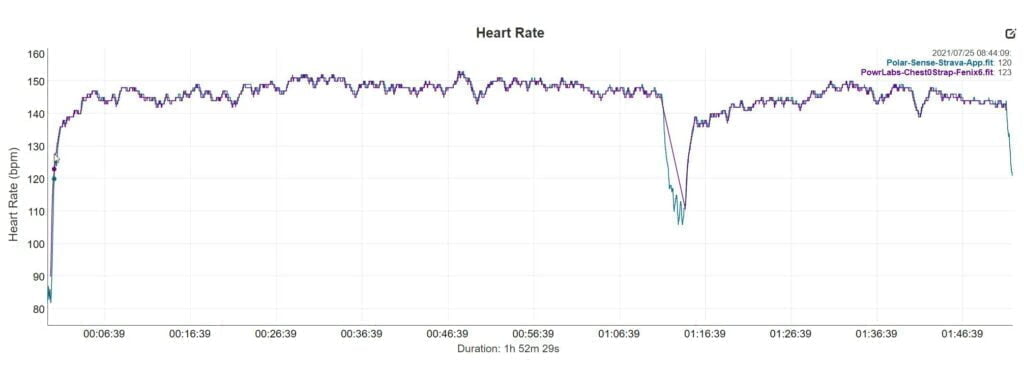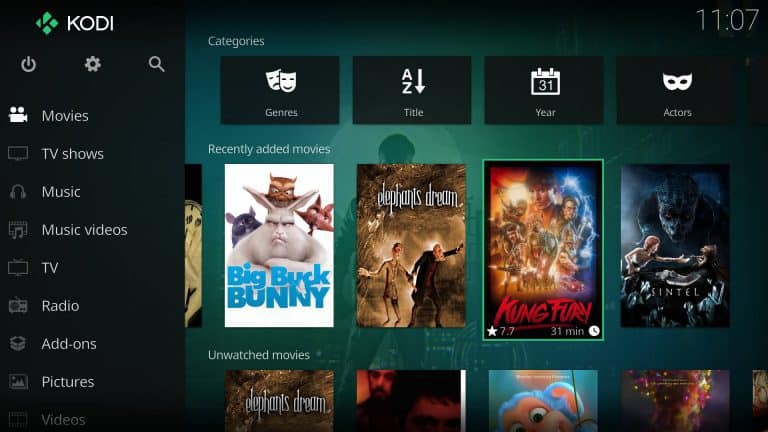Any links to online stores should be assumed to be affiliates. The company or PR agency provides all or most review samples. They have no control over my content, and I provide my honest opinion.
I reviewed the Polar OH1 optical heart rate monitor back in 2018 and have continued to use it until this year when the Polar Sense Verity was launched. Every other HRM I have tried has died or just not been very accurate.
Not much has changed since the older model, existing users shouldn’t feel too compelled to replace the OH1. But, the Polar Verity Sense improves things, and it ensures Polar continues to be one of the best heart rate options available in the UK.
| Preview | Product | Rating | Price | |
|---|---|---|---|---|

| Polar Verity Sense - Optical Heart Rate Monitor Armband for... |
£86.50 | Buy on Amazon |
Polar Sense Verity vs Polar OH1 Specification & Features

| Polar Sense Verity | Polar OH1+ | |
| Bluetooth Connections | 2 | 1 |
| Ant+ | Yes | Yes |
| Battery | 20 hours | 8 hours |
| Signal Range | 150m | 75m |
| Data Storage | 16MB | 4MB |
| Water Resistance | 50M | 30M |
| Dedicated Swim Mode | Yes | No |
| Swimming Clip | Yes | Yes |
Fundamentally, not a great deal has changed, it is basically the same sensor, and the unit itself has the same design. The strap has been improved to be less easy to flip over, and the strap is supposed to help improve the range.
The main improvements for most users will be the significant bump in battery performance, the increased range, which will be useful for swimmers, and the ability to have two Bluetooth connections plus unlimited ANT+, which is great for Zwift.
Unfortunately, I haven’t been swimming in years, and the pandemic has made this even more impractical, so I have not tested it for swimming.

Stand-Alone Use

The Polar Verity Sense, and its predecessor, can be used without pairing it up to a device to track. The HRM will record the data directly to storage, and you can sync it later. It is not something I have found much use for, you don’t get GPS, and it is not as easy to start/stop. However, I imagine it is quite useful for swimming.
This now has a dedicated swimming option. When you power the HRM on, it will switch to a blue light, indicating it is in broadcasting mode, if you then click once again, it goes to green for recording, and one more time it goes to white for a swim session.
You then sync your activity using the Polar Flow app.
Running Accuracy Comparison
I recently reviewed two HRMs from Powr Labs, one an optical armband, the other a more traditional chest strap. So, I am reusing most of the data from that review.
I predominantly use ANT+ for connectivity, my Garmin has it, and I find using ANT+ for Zwift to be a little more reliable than Bluetooth. One advantage of Bluetooth is that it is easier to identify what you are connecting to, as you get a friendly name.
On my most recent outdoor run, I used the Polar with the Strava app on my phone (this was obviously over Bluetooth not ANT+), then the Powr Labs with my Garmin Fenix 6 Pro.

The two monitors track well with no serious spikes or dips. At the start of the run, it looks like the Polar under-reports my heart rate, with things levelling off at around 90-seconds.
Throughout the run, everything is almost identical with just 1 or 2bpm difference.
Cycling Accuracy Comparison
Most of my tests were done indoors using the Tacx Flux S smart turbo trainer with Zwift, then the Garmin Edge 520 and Fenix 6 Pro.

There is slightly more variance in my most recent ride. Again, at the start, the Polar under reports for around 90 seconds.
Then on at least two occasions, the Polar Verity Sense drifts off a little bit. At 20 mins, there is a 4bpm difference between the other HRMs, and at 32mins, there is a 6bpm difference.
This would make it appear that the Powr labs armband is more accurate, but on more than one occasion, I found that fail to get a proper connection mid-ride which then reported 180bpm+. I suspect this is due to the inflexible armband coming loose, while the Polar has a much more reliable fit.
Polar Verity Sense vs Wrist Based Heart Rate Monitoring
I find that the accuracy differences between external heart rate monitors are so small that it is not worth stressing about. Where the Polar Verity Sense, and all other dedicated devices excel, is the accuracy vs the built-in HRM on whatever watch you may be wearing.
There is nothing wrong with the technology most of these devices use, I suspect my Garmin Fenix 6 Pro has a superior sensor than the Polar; it is just that the wrist is an awful place to pick up a reading.
Using the data from my Suunto 7 review, which used the wrist-based HRM, while the Fenix was using the Polar.
On a bike ride, the Suunto does well for large portions of the ride but unfortunately suffers from some major spikes and dips. Which seem to get worse toward the end of the ride.
Then on an outdoor run which I used to test the Huawei Watch 3 and Suunto 7.
I also had significant issues with the Huawei on the run, with it apparently not tracking accurately at all, likely a fit issue. The Suunto tracked the Polar well, but again it still had a few significant spikes; at one point, the difference was 17bpm with a couple of others over 10bpm off.
Price and Alternative Options
The Polar Sense Verity is around £80 available on Amazon, and for some reason, the older Polar OH1 still sells for around the same price.
The Wahoo TICKR FIT is quite a bit cheaper at £62.44 currently
Scosche Rhythm has three different options. They don’t appear to target the UK market directly, so they work out quite expensive. The Rhythm 24 is £100, and the Rhythm + is £90.
You then have various random brands such as CooSpo for as low as £34, I have bought this in the past, and it wasn’t that good.
The Powr labs armband is the best option I have tried from a lesser-known brand. You can import this from Amazon US for around £53.
Alternatively, you have chest straps, the Garmin HRM-Pro is the stand out option at around £90. It has the same Bluetooth/ANT+ connectivity, you can swim with it, and it offers running dynamics.
Overall
I have been a bit fan of the Polar OH1 for years, it is the only heart rate monitor that has managed to withstand my toxic sweat. The Polar Verity Sense offers almost an identical experience for me, but it has a much better battery and superior connectivity options.
It is certainly not cheap, and I can appreciate that many casual fitness enthusiasts may be put off by spending £80 when their Apple Watch/Garmin etc, can already track your heart rate. However, the accuracy of an external HRM is significantly better and will make a massive difference if you ever try to train with heart rate zones, or even for calorie calculations. It will also have a significant effect on other variables your wearable may track, such as exercise load, VO2 max and training status.
Many fitness enthusiasts dismiss the optical-based armbands because people like DC Rainmaker say they are less accurate than chest straps. While this is true, from my experience, you are looking at a few bpm difference, or a small lag in reporting, which I doubt will make much difference to anyone but high-level athletes.
Overall, for me, at least, this is about the best heart rate monitor on the market. It is easy and comfortable to wear (vs chest strap), is accurate, has a great battery and is almost certainly more durable compared to chest straps. The only other devices I’d consider are the Garmin chest straps that offer running dynamics, so you get a bit more data.
Polar Verity Sense Review Rating
Summary
The Polar Verity Sense is an excellent all round HRM offering good levels of accuracy, superb connectivity and should hopefully last you years without problems.
Overall
90%-
Overall - 90%90%
Pros
- Significantly more accurate that built in wrist HRM
- Rechargeable battery that last 20 hours
- 2 x Bluetooth + ANT+
- Significantly better long term durability than chest straps (in my experience)
Cons
- Not quite as accurate as a chest strap
- Quite expensive
- No run dynamics compared to similarly priced chest straps
I am James, a UK-based tech enthusiast and the Editor and Owner of Mighty Gadget, which I’ve proudly run since 2007. Passionate about all things technology, my expertise spans from computers and networking to mobile, wearables, and smart home devices.
As a fitness fanatic who loves running and cycling, I also have a keen interest in fitness-related technology, and I take every opportunity to cover this niche on my blog. My diverse interests allow me to bring a unique perspective to tech blogging, merging lifestyle, fitness, and the latest tech trends.
In my academic pursuits, I earned a BSc in Information Systems Design from UCLAN, before advancing my learning with a Master’s Degree in Computing. This advanced study also included Cisco CCNA accreditation, further demonstrating my commitment to understanding and staying ahead of the technology curve.
I’m proud to share that Vuelio has consistently ranked Mighty Gadget as one of the top technology blogs in the UK. With my dedication to technology and drive to share my insights, I aim to continue providing my readers with engaging and informative content.
Last update on 2025-07-06 / Affiliate links / Images from Amazon Product Advertising API












The strap on my Verity Sense disintegrated (velcro came away from the rubber) and so I cannot attach it to my arm. I only use it when on a rowing erg, never in the water and I have been very gentle with it. Has anyone else had similar issues?
That’s a bit annoying for you. Not had this issue myself and I wear it most days. I am extremely sweaty so I have had to put it through a hot wash quite a bit too.